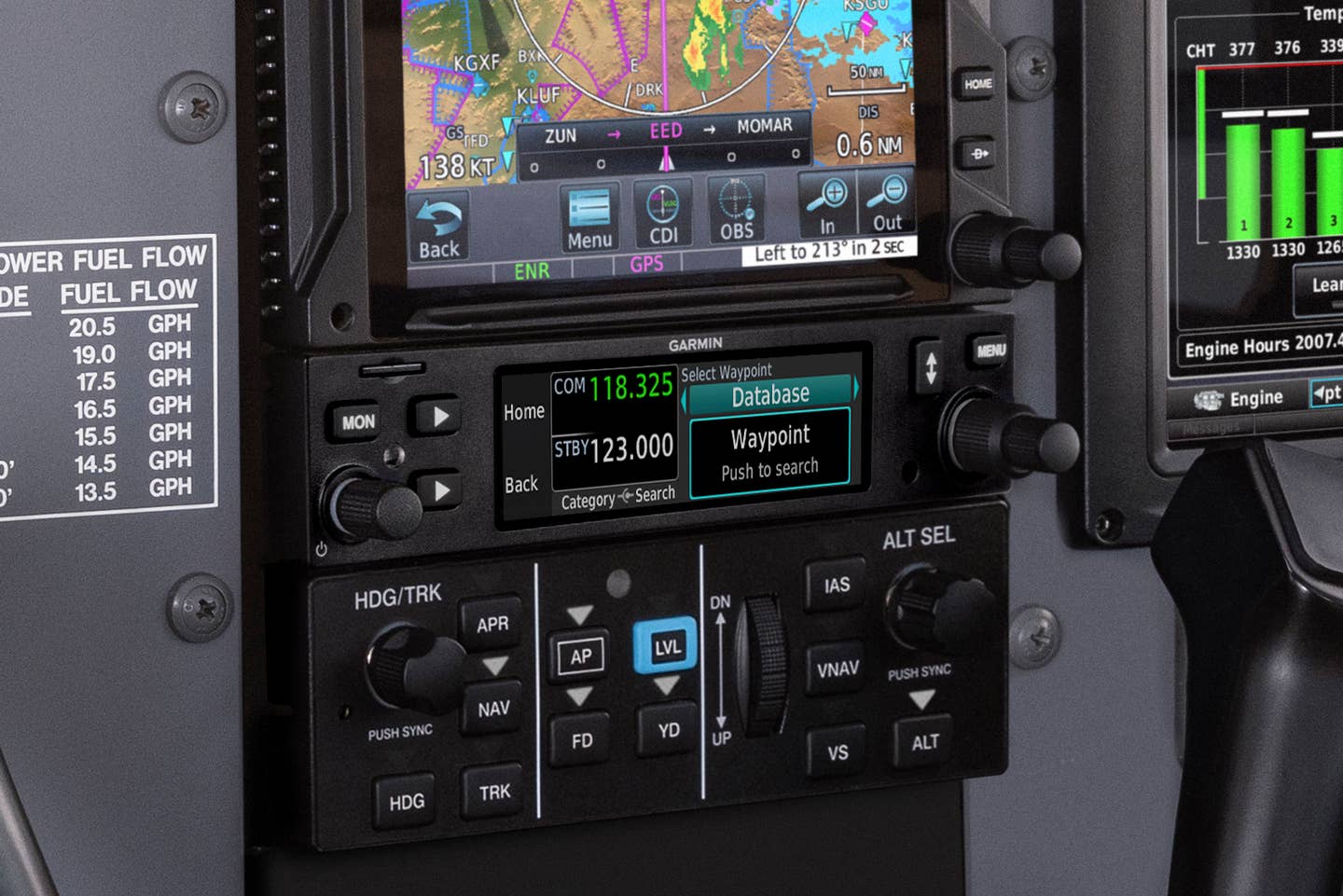Analyze This
Today’s engine analyzers can help you lower costs and fly more safely
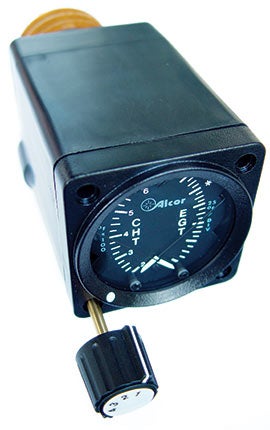 |
| The 46126 EGT/CHT Meter from Alcor Inc. |
No matter how modern an airplane's engines and systems are, predictable power is ultimately a pilot's personal responsibility. We rely on engine instrumentation to ensure safe flight, but we also like to optimize engine operations (for example, speed, distance or lifetime economy). The right information, reliably transmitted and interpreted, can save money and time, and prevent awkward situations.
When it's time to evaluate a new panel or decide on a new airplane, the availability, quality and clarity of the information from the engine bay(s) will play an important part. Whether you're replacing vintage "steam gauges" with the newest of the genre, or you're looking for "full auto" engine controls and monitoring systems to match, modern manufacturers are providing the best information ever available.
Save gas. Avoid shock cooling. Lower your maintenance costs. Log your aircraft's history. Balance your propeller. Spot trouble before it becomes catastrophic. Save weight and panel space while getting better information. Today's engine analyzers can do things that well-equipped shops couldn't do just a few years ago---and they can do it on the fly, using common software and common storage media. Trend monitoring, once the province of the heavy players, is now in our hands.
There are three technologies available to help us: traditional, dedicated gauges; stand-alone engine analyzers; and integrated engine instruments that are part of a flight deck. As always, anytime you're upgrading, check with the individual manufacturers for the latest information on TSO/PMA status and required STCs.
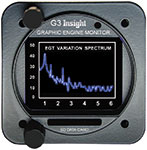 | 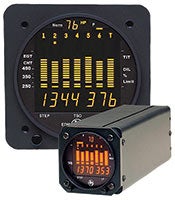 |
| The G3 from Insight Instruments. | The EDM-800 from J.P. Instruments. |
TRADITIONAL, DEDICATED GAUGES
The low cost, rugged construction, ready compatibility and classic look of traditional gauges mean that they'll be around for decades.
Alcor Inc.
Alcor has had a great reputation over the past 50 years, during which time the company patented the EGT thermocouple, allowing pilots to safely adjust the fuel-air mixture for optimum performance or economy. A logical pick when an authentic and functional restoration is in your plans, Alcor's CHT and EGT instruments and probes (in both grounded and insulated versions) are an industry standard. In fact, Alcor's single, dual and mixed (CHT/EGT) instruments, in 2.25-inch and 3.125-inch sizes, fill more piston-engine airplane panels worldwide than any other brand. Prices are in the $500 range. Learn more at www.alcorinc.com.
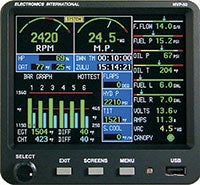 |
| The MVP-50P from Electronics International. |
STAND-ALONE ENGINE ANALYZERS
Stand-alone analyzers offer extremely comprehensive information. Their data capture and logging, as well as their ability to diagnose specific parameters, balance well with their moderate cost and pilot-friendliness.
Electronics International Inc.
The MVP-50P is a newly TSO'd and certified engine analyzer/system monitor that shows programmable critical engine parameters with audio and visual limit warnings, including engine hours, rpm, manifold pressure and oil temp and pressure. It can also monitor the positions of flaps, trim, time and more than a dozen other parameters (including whether your door/canopy is open, plus others that you program). Data loads through a USB port and can be viewed on dedicated EGTrends (see the sidebar in this article) or Microsoft Excel software. Additional screen displays allow you to build customized checklists and store general information, flight plans, the POH and a myriad of other data. Existing customers can send in their existing MVP and get a free software upgrade to make it TSO'd. The two-pound device costs about $4,500. Learn more at www.buy-ei.com.
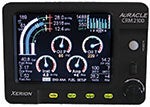 |
| The AuRACLE CRM2100 from Xerion Avionix. |
Insight Instruments
The original GEM (graphic engine monitor) has had countless followers since its introduction in 1979, and the GEM Series G3 will replace it and expand its function a hundredfold. The full-color G3 retains all the functions of the GEM 602/603/610, but adds significant new capabilities, including lifetime data logging of all traditional parameters as well as engine vibration, propeller balance, landing shocks and internal solid-state G-sensors. By interfacing with your GPS, the G3 allows tracking of routes and winds aloft. Easy updates and data logging via an SD card enable future upgrades over the Internet, with no special software required to read the data. You'll see a display of rpm, manifold pressure, CHT, EGT, peaks and warnings, oil temp and pressure, fuel flow, OAT and voltage. The G3 fits in a 2.25-inch hole and projects roughly four inches behind the panel, providing for a compact installation. The six-cylinder model (four- and nine-cylinder versions are also offered) markets for $3,200, including probes. GEM trade-up allowances are available. Learn more at www.insightavionics.com.
J.P. Instruments
The EDM-700 and EDM-800 are high-performance engine analyzers that have had years of development and still hold a large piece of the market, due to their robust construction, full information and unique features. J.P. Instruments President Joe Polizzotto says, "You want all cylinders on the lean side, but not too far, and the EDM shows each cylinder as it goes over peak EGT. We fly our Mooney 231 at 10 gph and 180 knots from Scottsbluff, Neb., to Los Angeles, Calif., on one tank." The pilot-friendly programming is evident in the clear monochromatic display. Data logging is automatic and its interval is adjustable; it's enhanced through free EzTrends software. The 800 is a "loaded" version of the 700---oil temperature is the only option left. The six-cylinder EDM-800 retails for $3,995. Learn more at www.jpinstruments.com.
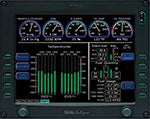 |
| Avidyne's EMax on the FlightMax Entegra EX500. |
Xerion Avionix
At Sun 'n Fun 2008, Xerion introduced its AuRACLE CRM2120, the twin version of the screamingly successful CRM2100 and CRM2101 graphic monitors. The entire CRM series uses a unique display to put a lot of information comprehensibly on a small screen: rpm, manifold pressure, CHT, EGT, fuel flow, OAT, volts and amps, calculated horsepower and a number of user-programmed functions. The Xerion AuRACLE is certified for all four- and six-cylinder Beech Bonanza, Cessna and Piper aircraft. One of Xerion's goals is to replace as many old systems as possible while aggressively chasing the OEM market. (Its plug-compatible CRM2101, for instance, directly replaces the J.P.I. EDM-700 while adding other functions.) The CRM2120 isn't simply a "double" CRM2100; its twin screens can function independently, be flip-flopped or even be combined at the pilot's command. The four-cylinder CRM2100 costs $6,995, and the six-cylinder version costs $7,495. If you're upgrading systems that are already on board and compatible, reduce those prices to $5,650 and $5,926, respectively, for the CRM2101. At this writing, prices for the CRM2120 are still in the works. Learn more at www.xerionavionix.com.
ANALYZERS INTEGRATED INTO FLIGHT DECK SYSTEMS
As modern cockpits increasingly move to a "flight deck" approach, integrated engine analyzers are becoming increasingly popular.
Avidyne
Avidyne's Entegra flight deck incorporates the EMax engine analyzer, which can be displayed full-screen on its EX5000 MFD. During flight, engine parameters are displayed in the upper-left corner of the MFD; a full-screen look remains instantly available. Even as engine parameters (rpm, manifold pressure, percent power, oil temp and pressure, EGT, CHT, OAT and buss voltage) are displayed, the "fuel totalizer" monitors fuel flow, computing nmpg, fuel remaining, fuel-to-waypoint and fuel-to-destination. "Lean assist" mode announces when you lean for "best power" or "best economy," and when "peak EGT" is reached by the first cylinder. (The display then changes color from green to blue, and shows actual peak EGT.) EMax logs all engine data, which is downloaded through a USB port. Learn more at www.avidyne.com.
| Software |
Making sense of the data was the inspiration behind the formation of EGTrends. Michael Mahoney and Dave Garing developed EGView software out of necessity. "We didn't really want to build a software application to view our engine data; we just wanted to fly our plane," said Mahoney. Supporting many popular units, including Avidyne, Electronics International and older J.P. Instruments software (newer J.P.I. software isn't compatible with EGView), the program allows trend monitoring by anyone who's interested enough to look. With the safety issues and dollar costs that come with poor monitoring, EGView is becoming more popular. As features are added (see the website for more than you'd even think to ask) and more platforms (Pocket PC and PDA) come on line, it's also becoming easier to use. For more information, log on to EGTrends' website at www.egtrends.com. |
 |
| Engine data as it appears on the Garmin G1000. |
Garmin
Garmin's G1000 glass panel includes full-function engine analyzer capability and, as such, offers a ton of engine-related information on a slice of its 10.4-inch MFD (on the 900X); the G1000 is also available in 12- and 15-inch screens. Included are an all-cylinder (cyclable with a soft key) graphical EGT with a "lean assist" function; cyclable, all-cylinder CHT; and alternator and battery information. In this same area, the pilot gets fuel flow and level information. The screen can be instantly configured to display more or less detail. The future doesn't rule out data-logging capabilities, but for now, the Garmin flight decks don't keep track of engine parameters in any user-available way. Learn more at www.garmin.com.
 |
| The SmartDeck from L-3 Communications. |
L-3 Communications
L-3's SmartDeck presents one of the most integrated flight deck solutions in general aviation, but it's not yet available in any OEM or add-on application. On the MFD, the usual data---all-cylinder EGT and CHT, rpm, manifold pressure and oil temp and pressure---are augmented by percent power and fuel flow, along with electric system information. L-3 has a unique "trend monitor," as well: the previous 10 minutes of oil pressure or engine temperatures are continuously displayed. This allows the pilot to adjust to in-flight changes, allowing a more educated judgment call while easing that momentary shock you always get when you can't remember, for certain, what the values were during your last scan. Like the Garmin G1000, the L-3 SmartDeck displays, but doesn't log engine data for historical or diagnostic purposes. Learn more at www.l-3com.com.

Subscribe to Our Newsletter
Get the latest Plane & Pilot Magazine stories delivered directly to your inbox

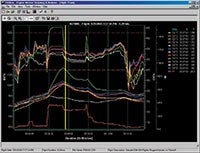 Dedicated software enhances what your instruments tell you and helps you collect, save and analyze your data from different angles, then chart the data trends. This aids development programs, tracks pilot habits and lets you or an expert diagnose early warning signs (or eliminate "false positives") to prolong engine life, save gas and fly safer, all while keeping good records, which is useful when it's time to sell or rebuild. All digital engine analyzers generate data, sometimes lots of it.
Dedicated software enhances what your instruments tell you and helps you collect, save and analyze your data from different angles, then chart the data trends. This aids development programs, tracks pilot habits and lets you or an expert diagnose early warning signs (or eliminate "false positives") to prolong engine life, save gas and fly safer, all while keeping good records, which is useful when it's time to sell or rebuild. All digital engine analyzers generate data, sometimes lots of it.
